Fisher Layouts
Cotton Lane
Layout DescriptionExhibition Managers Information
Exhibitions Attended/Invited
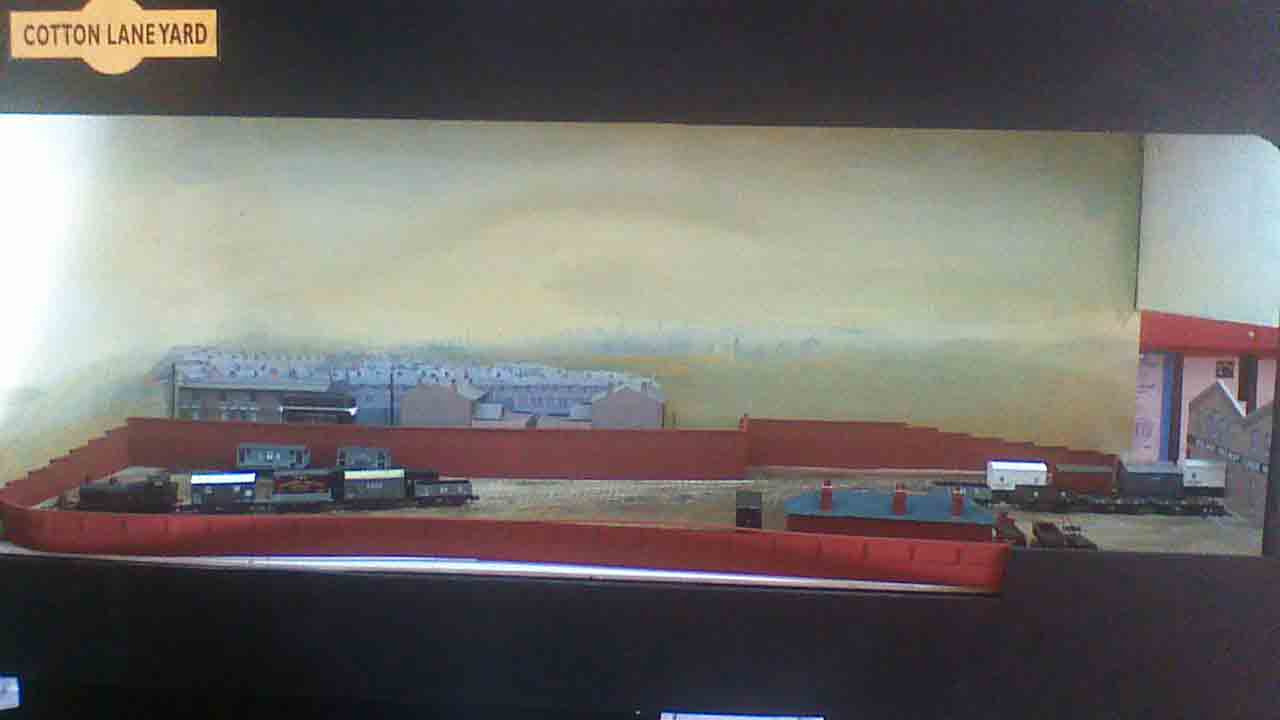
Description
At the end of the 2015 AGM our club Chairman announced a 'Chairmans Challenge'. Each participant was given a plywood box 31 inches long, 11 inches wide and 16 inches deep. One side of this box was missing and so was the lower half of the right hand side. A close fitting lid was provided on top.
Inside this box the participant was to create a working diorama, free choice was given to the subject, but the diorama must be built in 6 months with a maximum budget of £50.00. You could do anything to the box but the overall size must not increase by more than 1 cm all round. Anyone not completing the task had to refund the cost of the box.
Six individuals took up the challenge.
I have always modelled in 4mm originally in 00 gauge but for the last 40 years in EM gauge. I had recently joined the club, which had only been going for a couple of years and had become their first Secretary. At that time the majority of members worked in N gauge, and the club layout was N gauge. So I thought this was an ideal chance to try something different.
N gauge mechanisms have improved since I first looked at and discounted them, so I bought an LMS 4F then recently reissued by Bachmann and some wagons. Whilst working on a large layout in the 1980's I was the Carriage and Wagon gaffer, and have kept an interest ever since. I had noticed that the majority of N gauge layouts were largely modern image with little in the way of shunting. N gauge track always appeared to me to be too big and spoilt the illusion.
I had seen some very nice EM or P4 layouts at shows based on a goods yard, at least one of which had an unconventional approach to the fiddle yard. This seemed to be a way of getting maximum track into the box. So the plan evolved, it would be set in the 1930's - thats the period I model in in EM so I thought 'stick with what you know' - in a midlands town. It would feature the yard at the back of a medium sized town goods yard. At an early stage I decided to have a road at the front, lower than the yard separated by a large brick wall. Behind the yard would be a row or two of terraced housing typical of the area again separated by a large brick wall..
The goods shed would be built on the lid, now turned upside down and joined to the box in such a way that it could be separated and put back on top.The shed itself would provide the screen to hide the fiddle yard from the viewer. Trains would arrive and depart behind the shed, and wagons would be shunted into and out of the shed as appropriate.
Both the layout and fiddle yard are laid onto 9mm ply raised some 3 inches above the floor of the box, giving room underneath for operating levers and wiring etc..

Templot was used to plan the layout, I would need to build my own track to squeeze every inch of space out of the layout I settled on code 40 rail soldered directly onto copper clad sleepers. Having built many 00 and EM gauge turnouts over the years and even a couple in 5inch gauge, construction held no fears, although I have never worked on anything this small. The layout features two turnouts, a tandem pair and a curved double slip. An early change was to lay in an arrivals road as well as a headshunt. Space was at a premium and I was only going to be able to shunt 5 wagons at a time.
Some time was spent building the terraced houses. Having measured the space available, I realised I could get two rows of houses end on to the viewer and a short row face on. A trip around Derby on Google street soon identified a row of terraced houses looking the part on Cotton Lane. This further linked to me since I had relatives that lived on Cotton Lane in Derby. With the aid of my wife, Elaine, an experienced Graphic Designer, we created our own kit based on the Cotton Lane terrace from the photographs extracted from Google Street.Click here to see how we built the terraces.
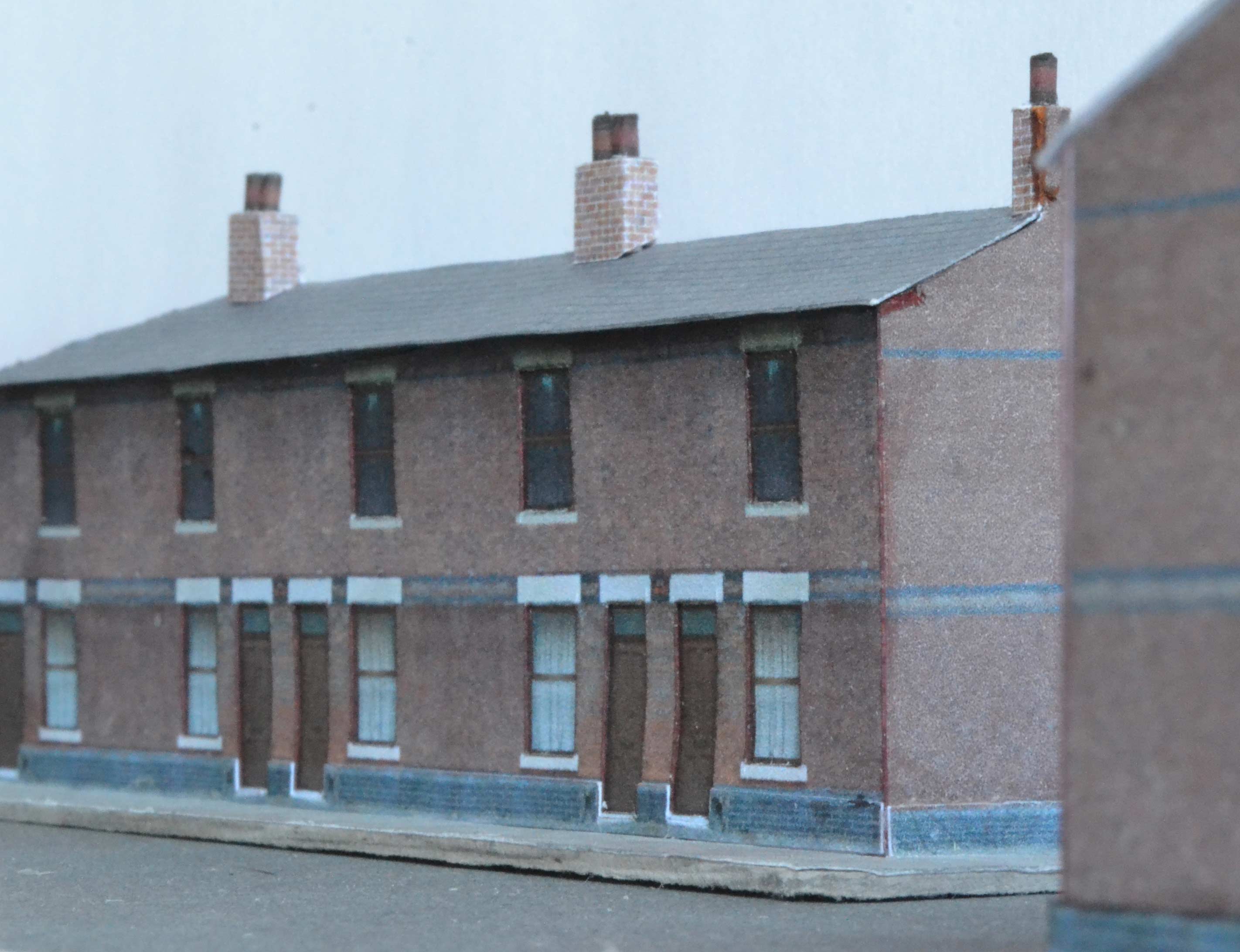
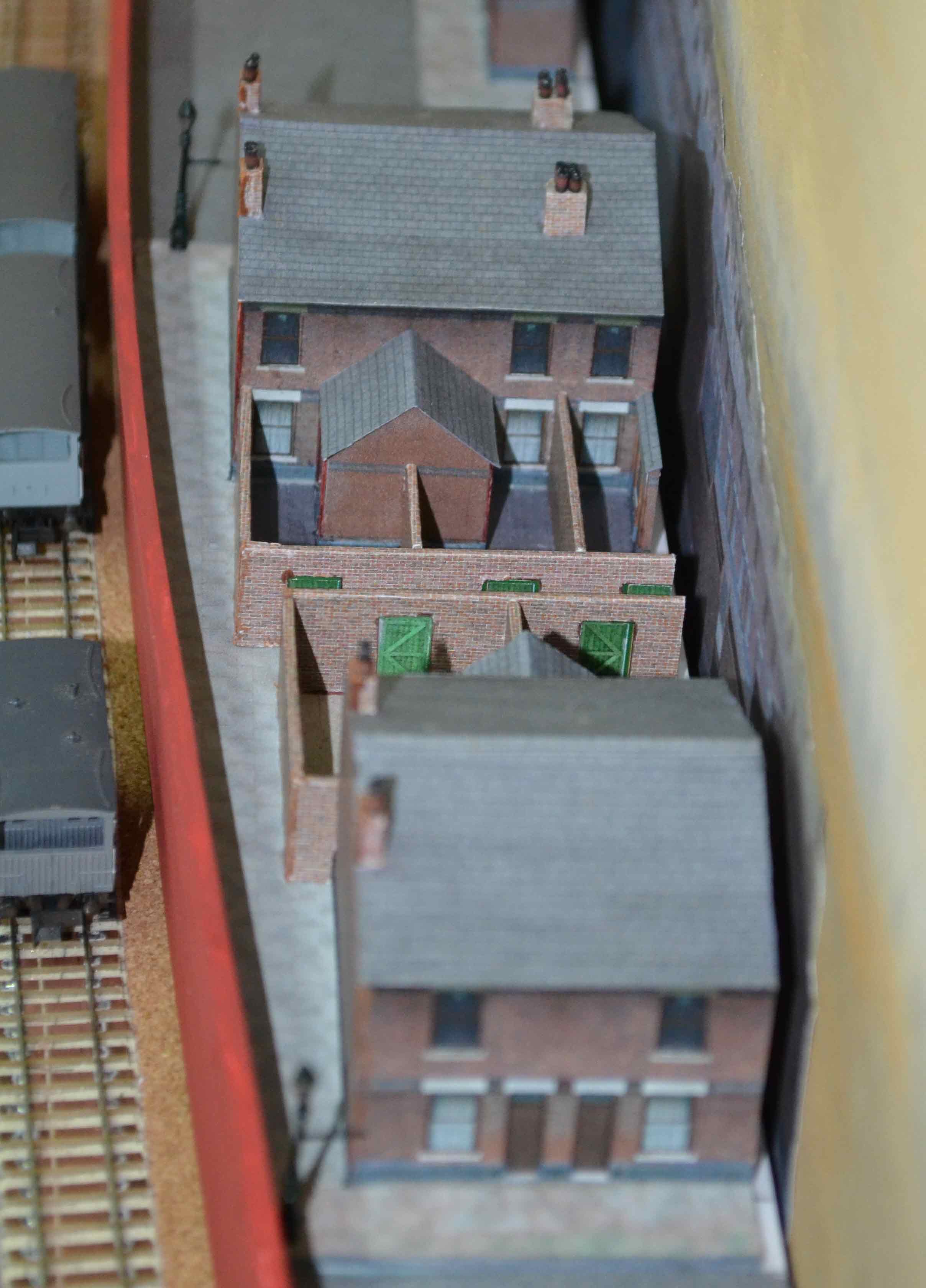
Having built the houses they were extensively photographed, and those photographs were used to create the rest of the town on the backscene. The watercolour backscene itself was painted by Elaine in yellows and browns to give the impression of a dirty smoky industrial town.
Originally the wall around the site was going to be made from card covered in brick paper, but although this worked with the houses, it looked far less convincing. I resorted to rebuilding the wall in slaters embossed plasticard, which really looks the part. Then we turned our attention to the goods shed. The observation that the Midland Railway wrote their name and the name of the yard around the first floor level helped to set the scene.
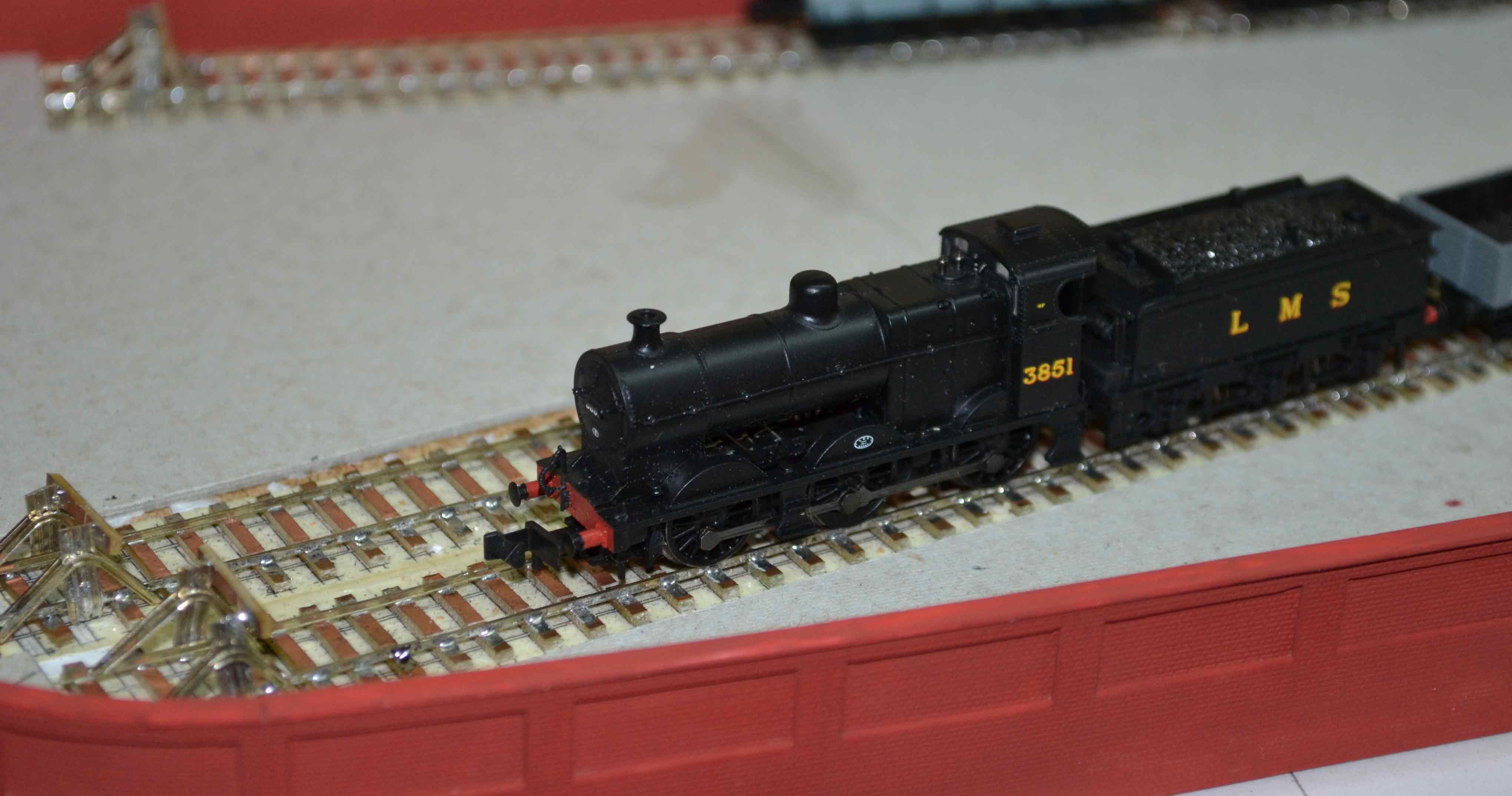
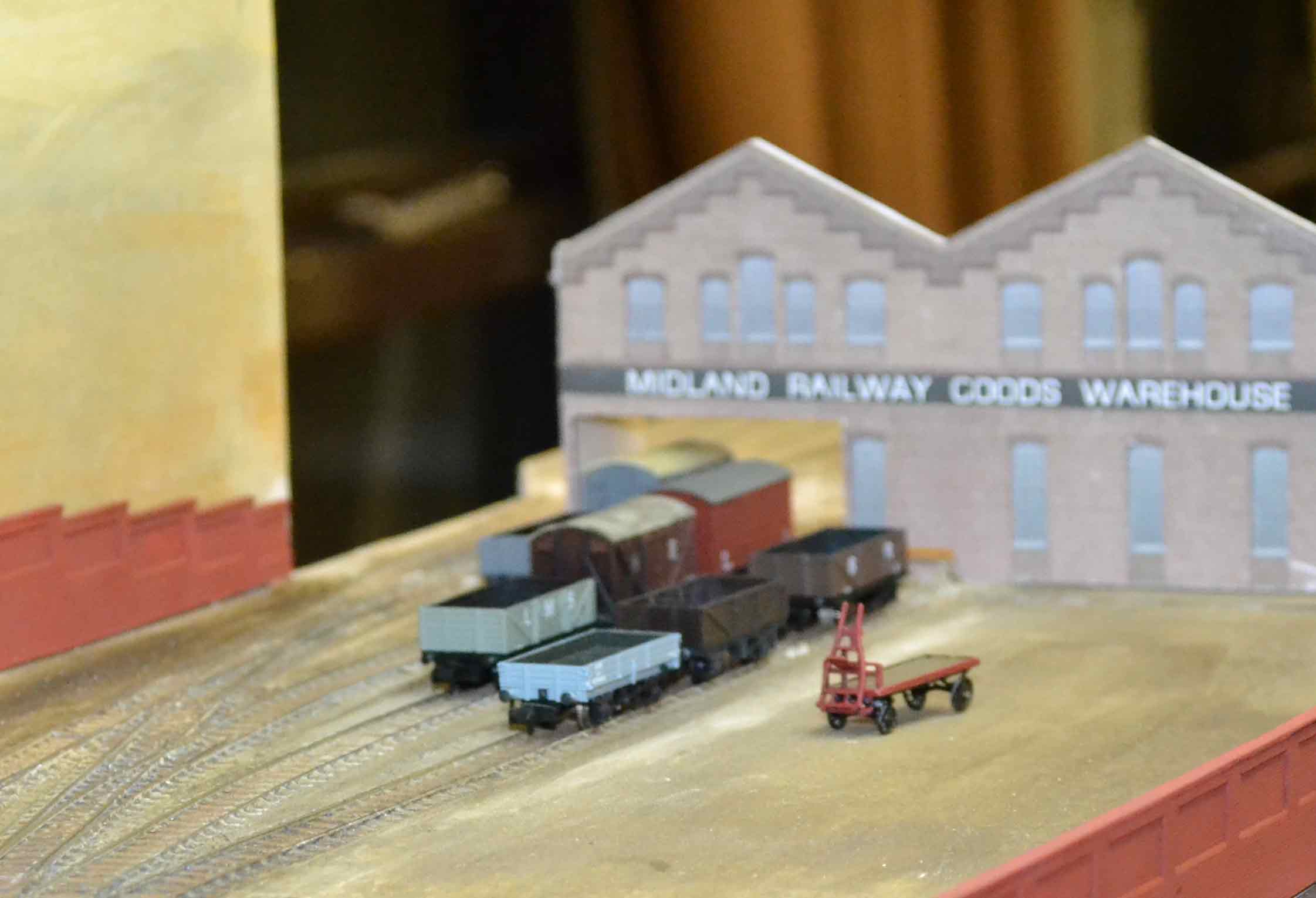
At about this time the club was forced to move out of the clubrooms we had enjoyed since formation and my time was spent trying to find alternative accommodation, and I fell behind. I managed to finish the trackwork, wired it up and ballasted it a couple of days before the time ran out. Some of the finer details, and the shed roof, were left unfinished.
Control is acheived using DCC via NCE handsets. Initially the points were operated manually, with pull rods now they are operated by servos controlled through an Arduino micro processor
So it was, Cotton Lane, as it was now called, went before the judges, where it received a third place. Shortly afterwards the club 00 gauge layout, Jakes Yard, was due at the Broadland Model Railway Club show in Aylesham, Norfolk. The visit had been setup by a friend of mine who at the time was a member there. He persueded me to bring Cotton Lane up as an extra exhibit, which I did and was very pleased with the comments from visitors to the show.
Since then work has continued finishing the bits that didn't get done for the judging. Now the challenge is over I can go over the £50 budget. Initially I have built a block of offices, which sadly the viewers only ever get to see the back of, but it is modelled complete as you can see in the photographs. Rolling stock is being fitted with Alex Jackson couplings and home wound electro magnets fitted so that we can shunt properly.
Exhibition Managers Information
At present the layout is:-
- To 2mm scale N gauge with finescale track.
- Size 5 ft 2 ins long by 1 ft wide.
- The layout will be primarily operated from behind so requires (ideally) 7 ft by 5 ft.
- Lightweight, constructed from Plywood with its own stand, quick and simple to erect and knockdown.
- Single power supply required.
- It can be operated by 1 but ideally 2 operators.
- Attendance for expenses only, (transported in an estate car from North East Derbyshire).
- It is equipped for DCC train operation, point and signal etc. control by Arduino micro-processors.
- Operational period will be late 1930's.
Exhibitions Attended/Invited
| 3rd October 2015 | Broadland MRC | Aylsham, Norfolk |
| 6th May 2017 | Billericay MRG | Galleywood, Essex |
,